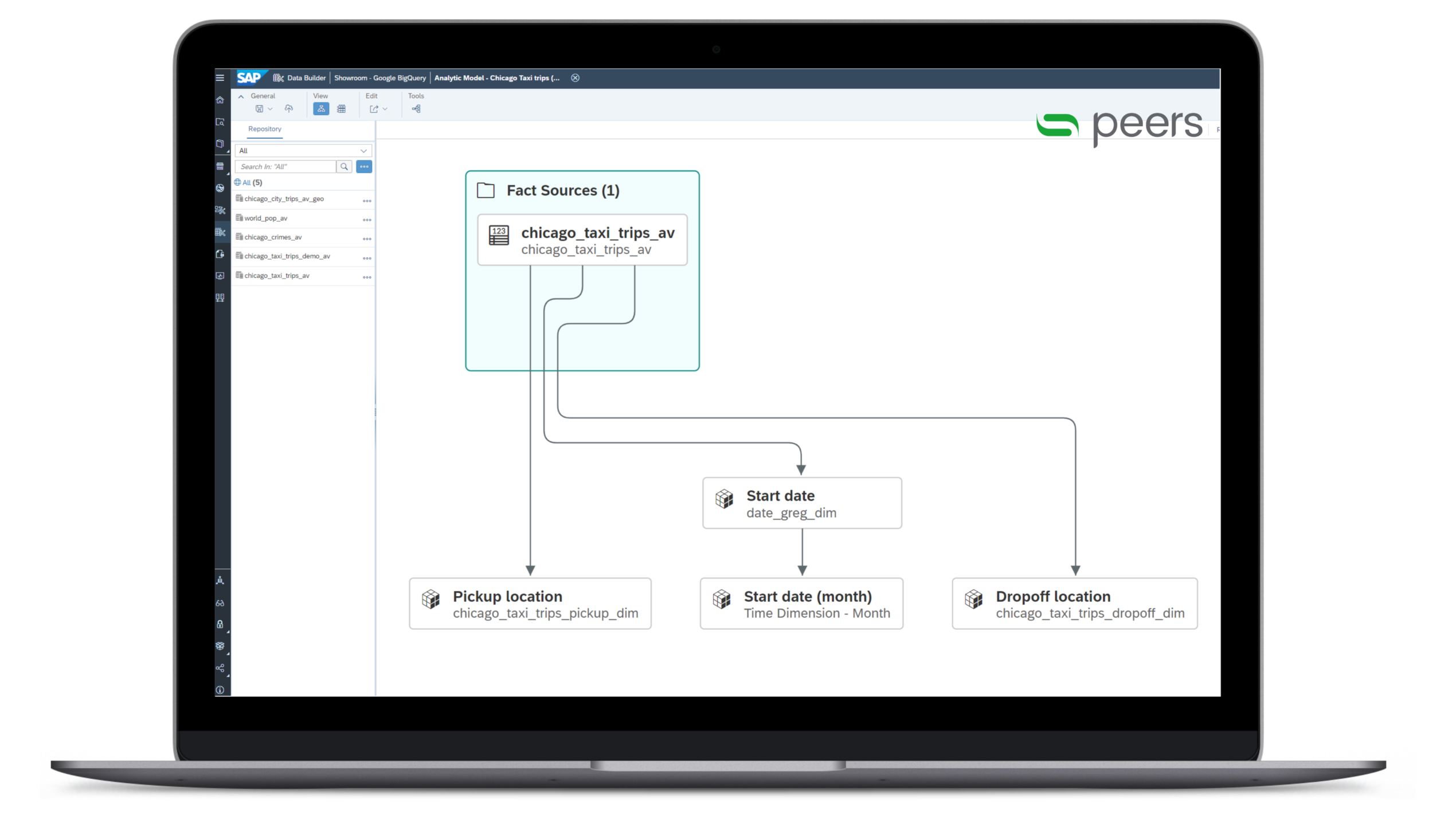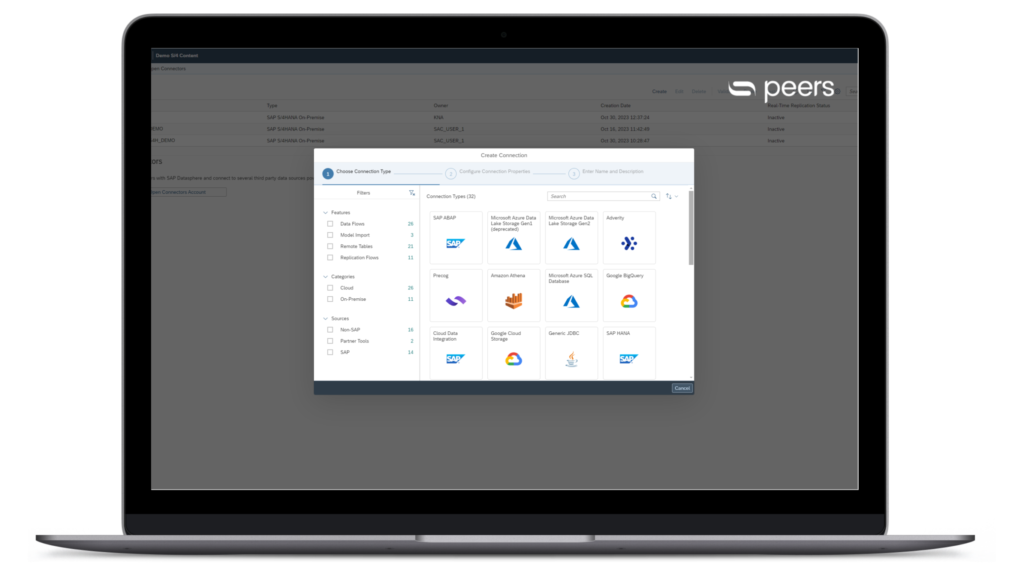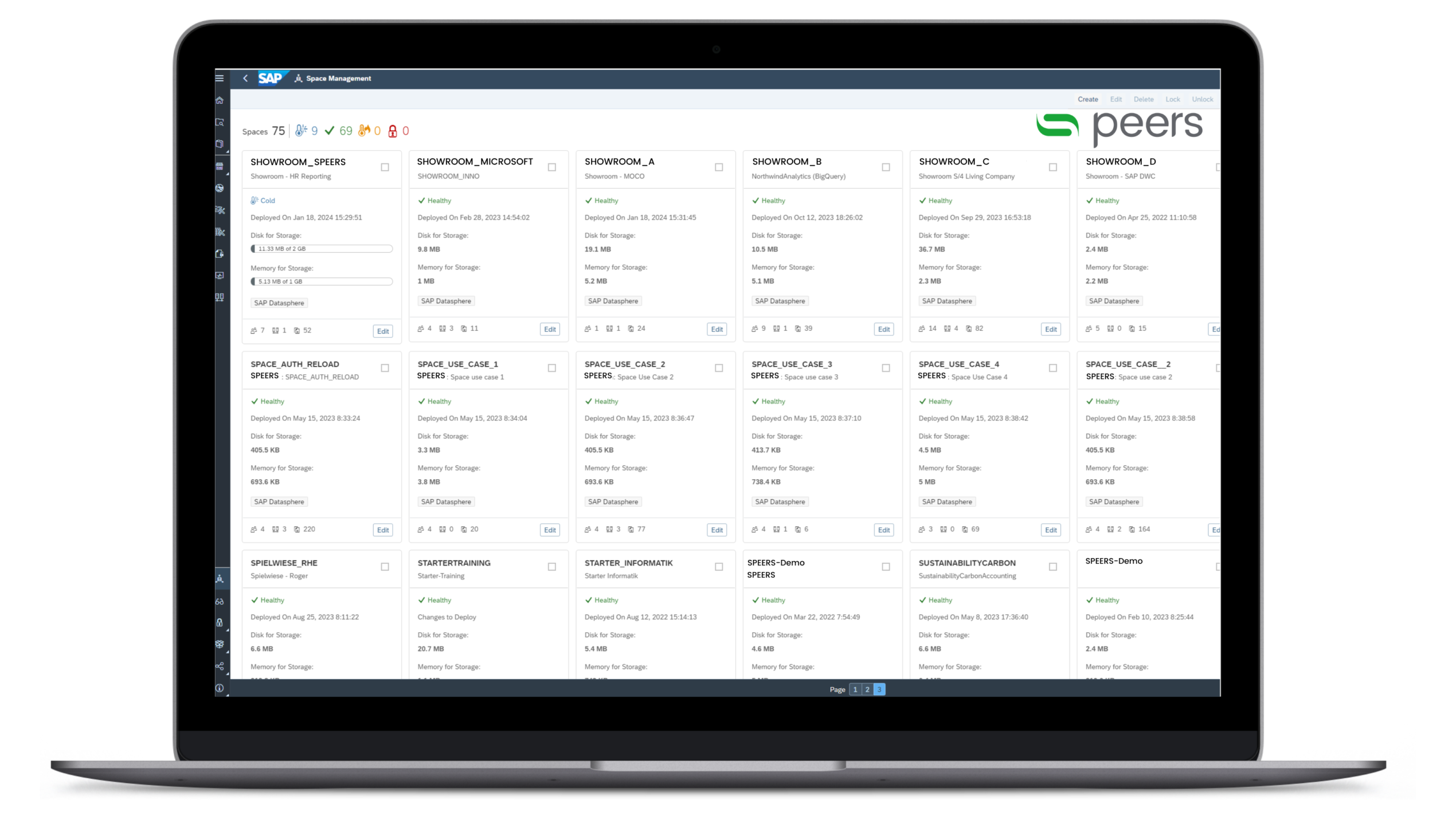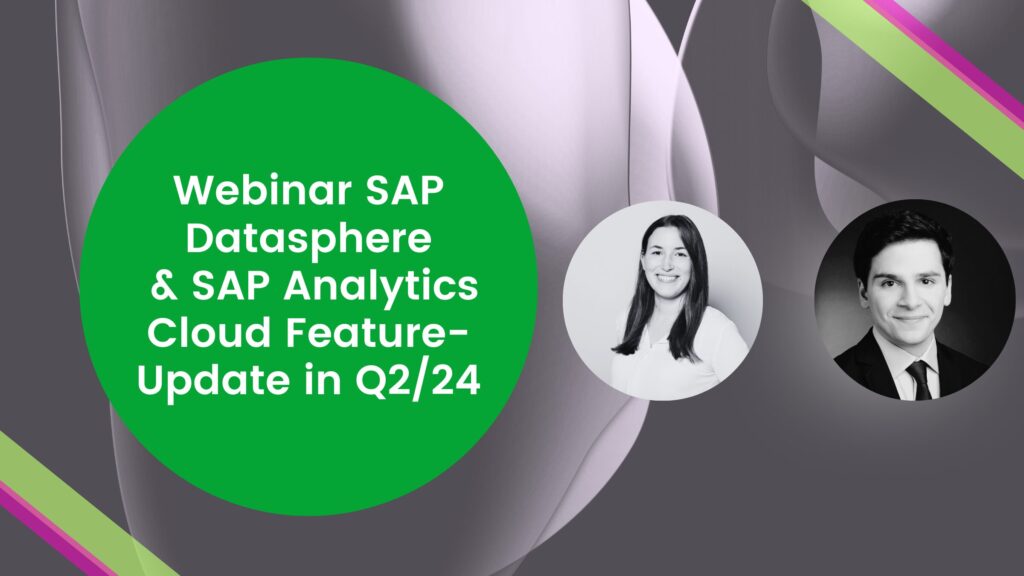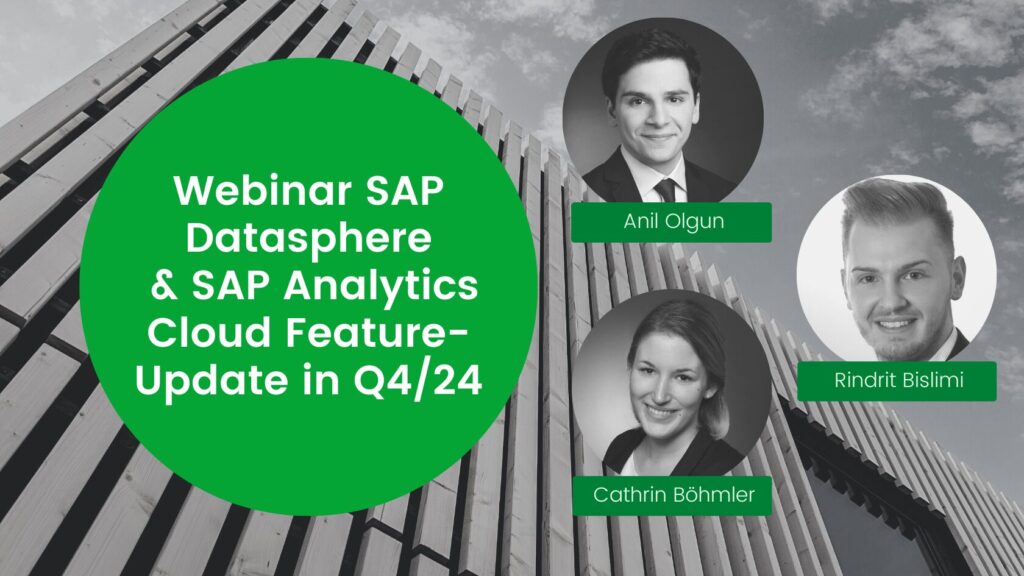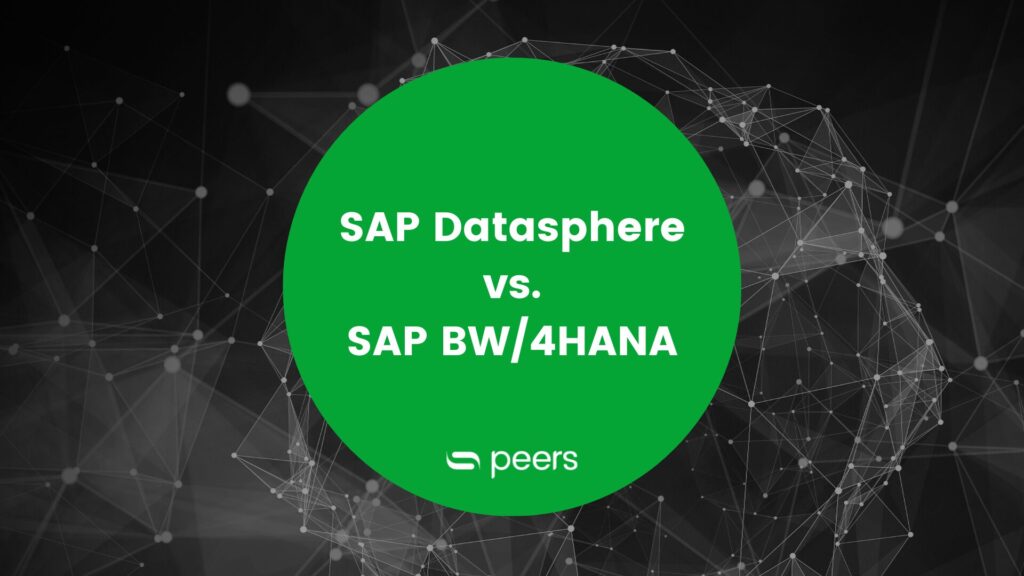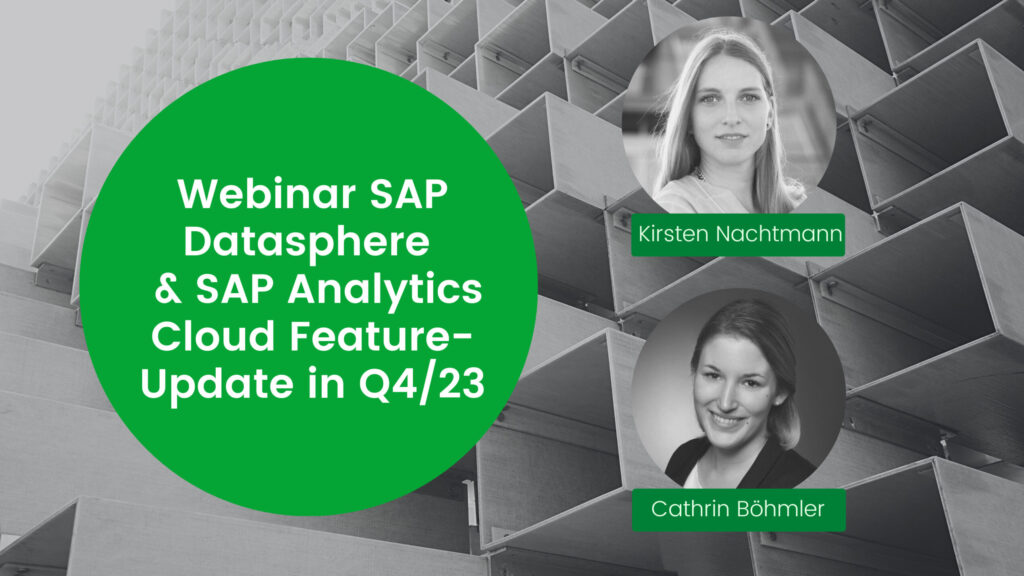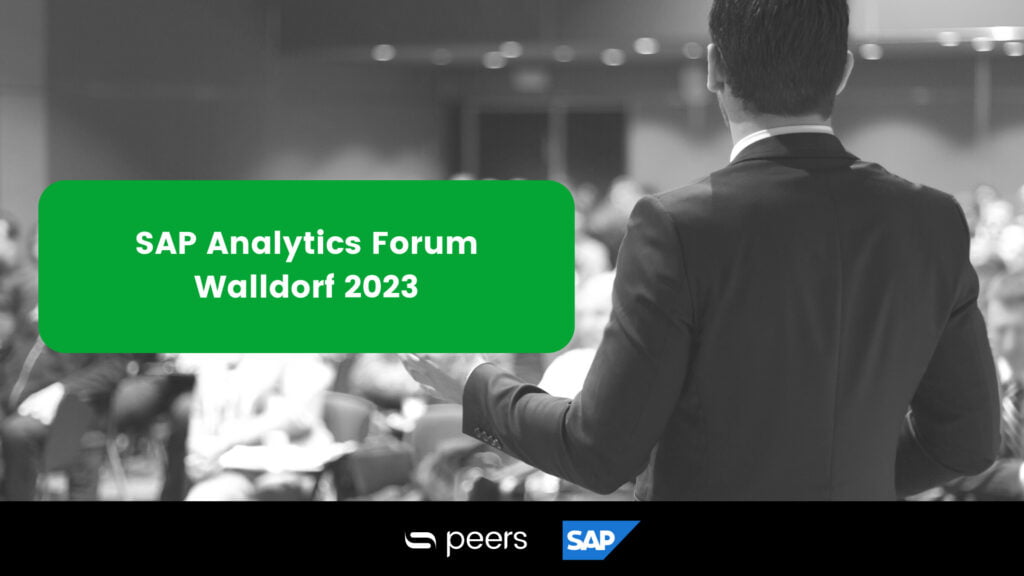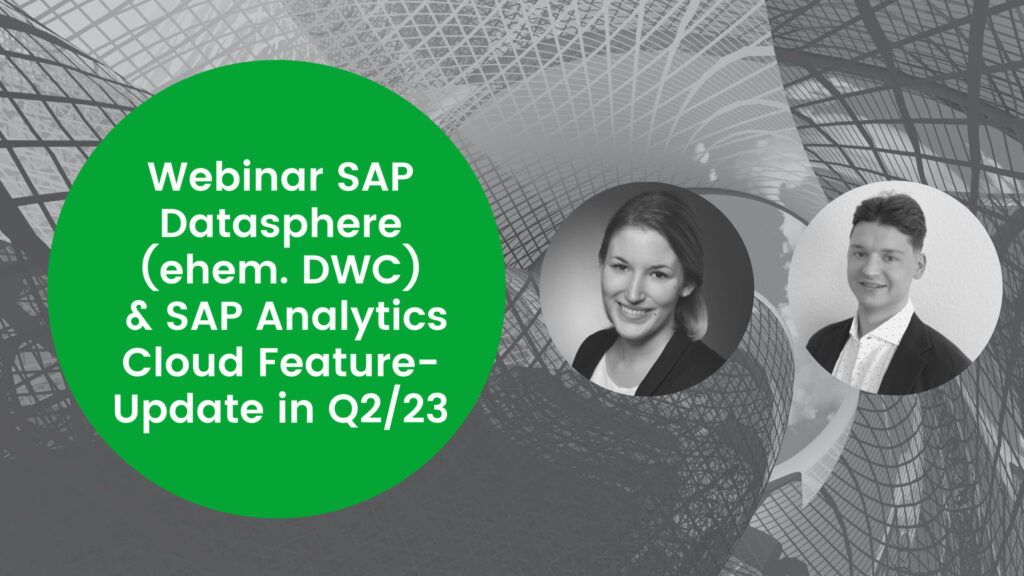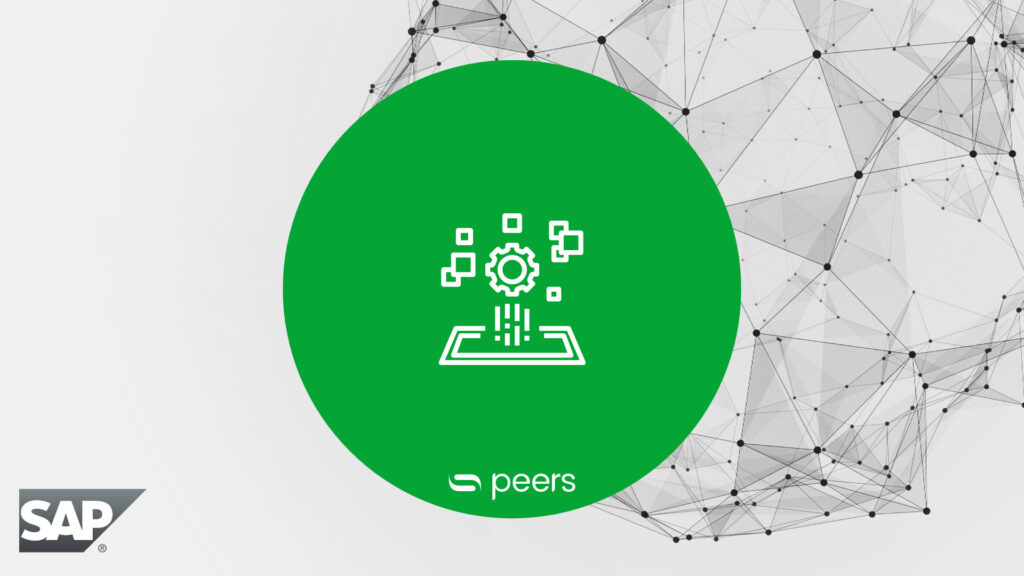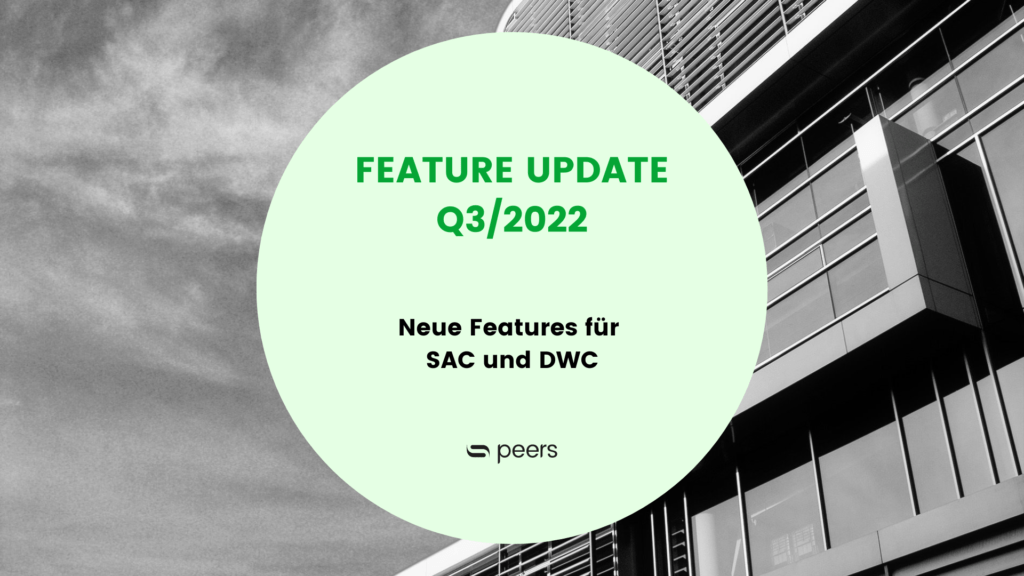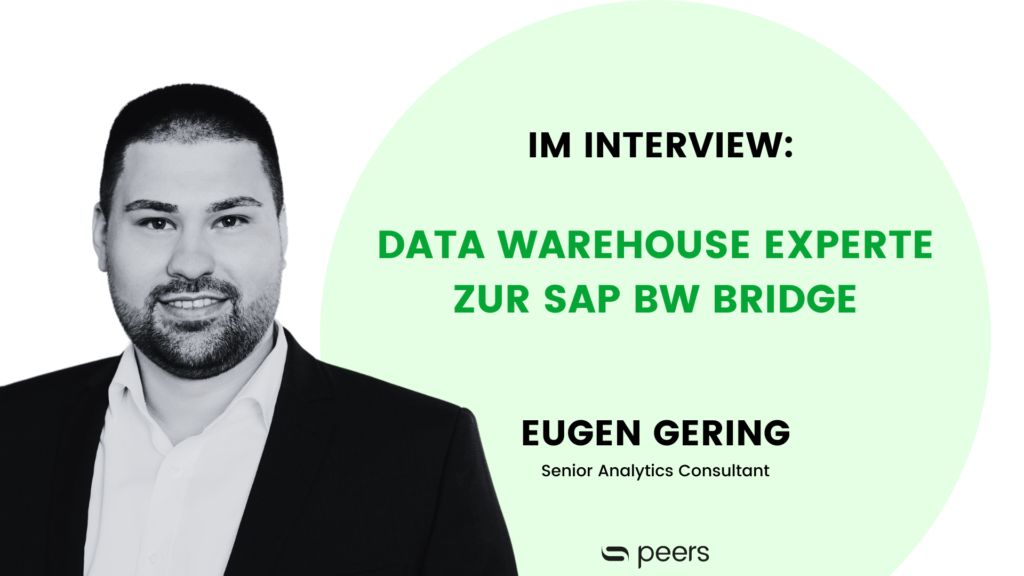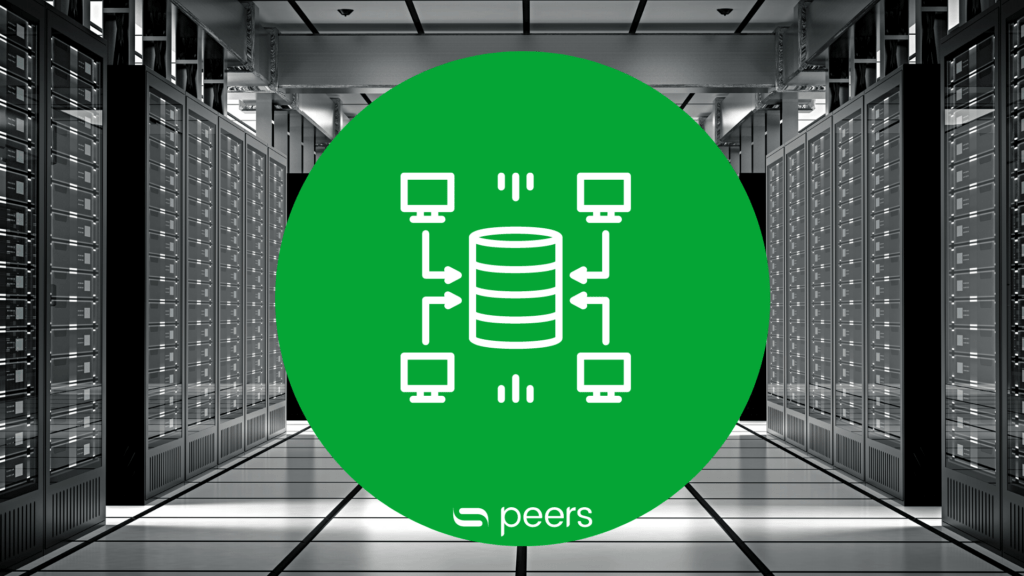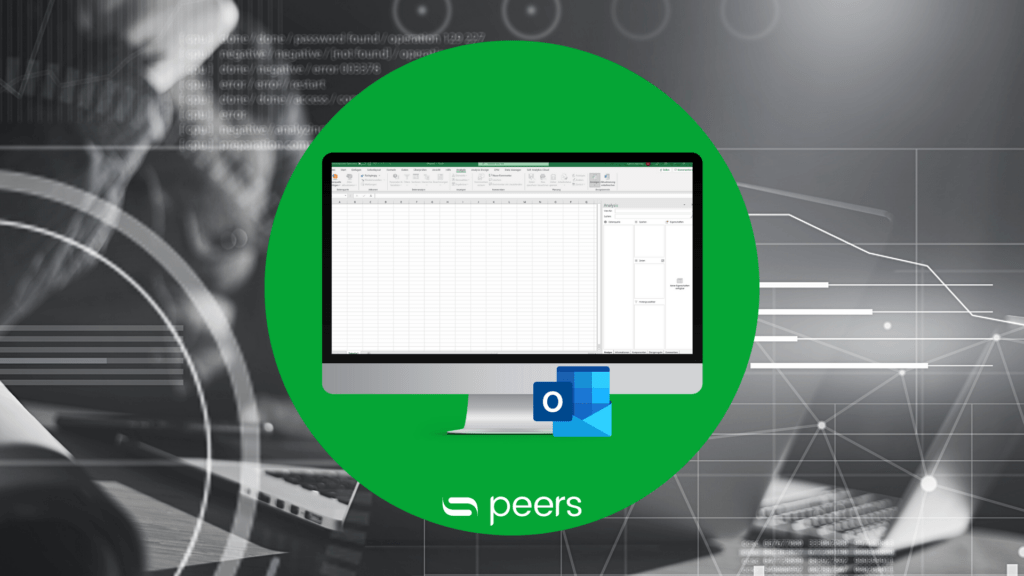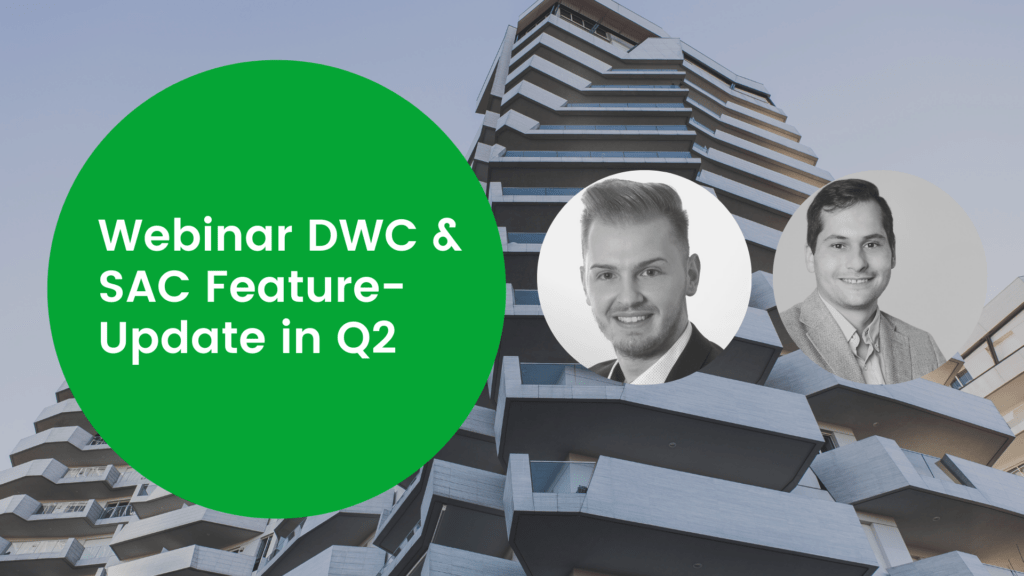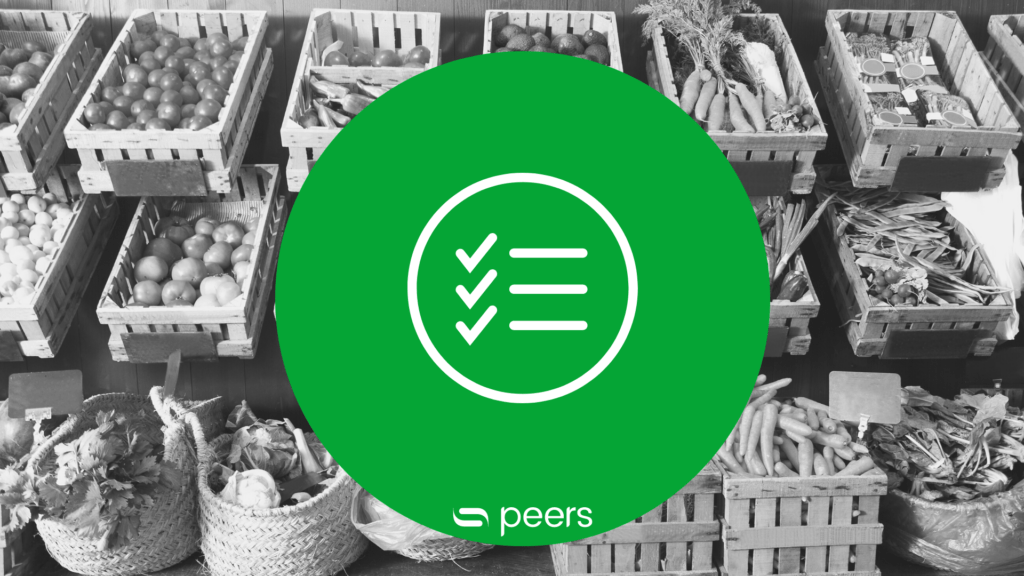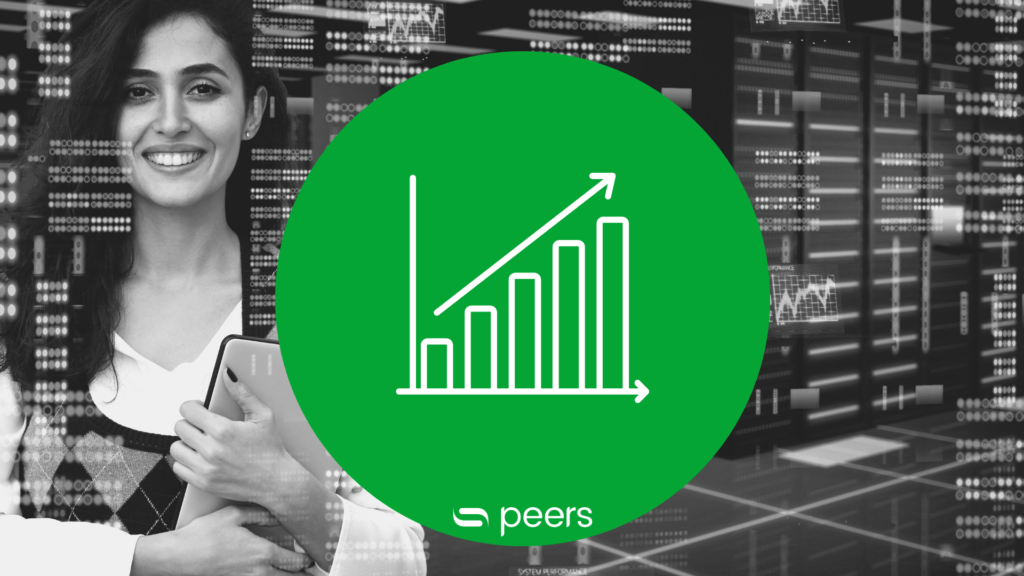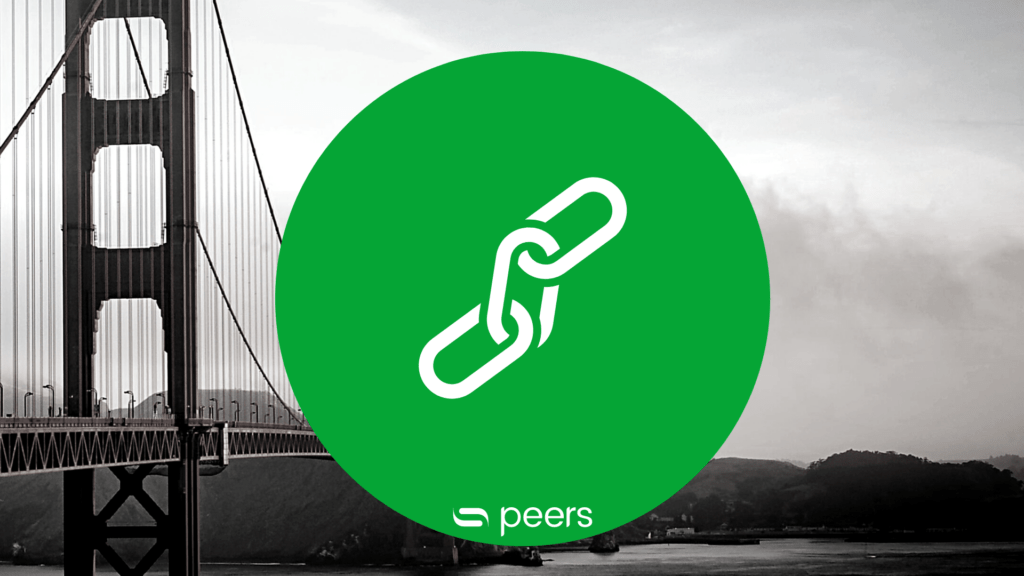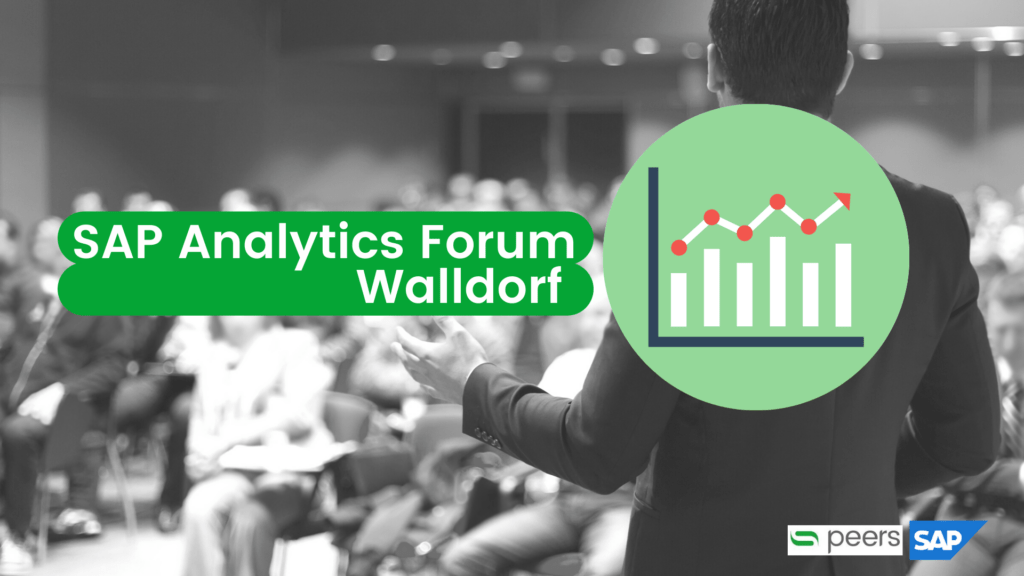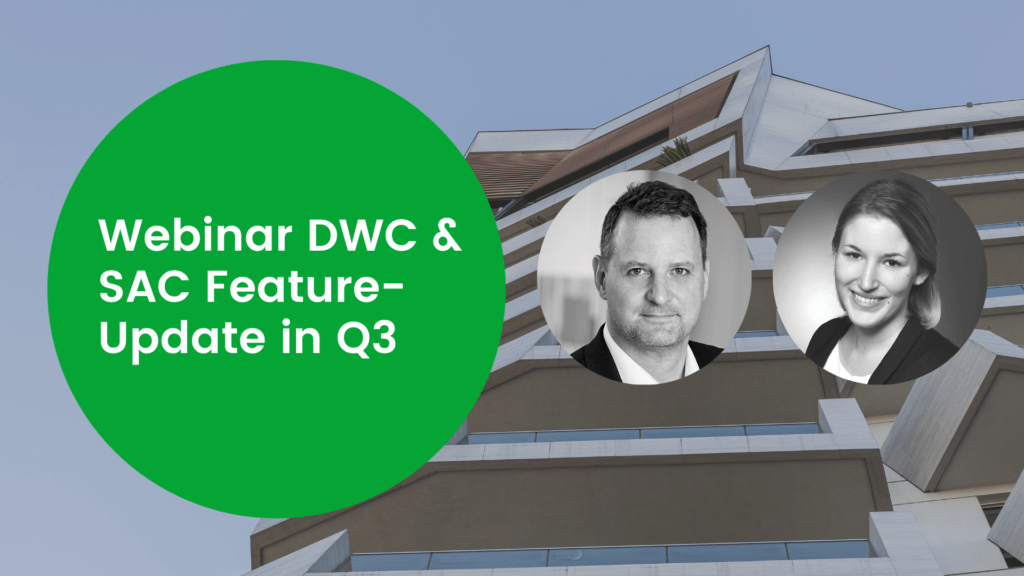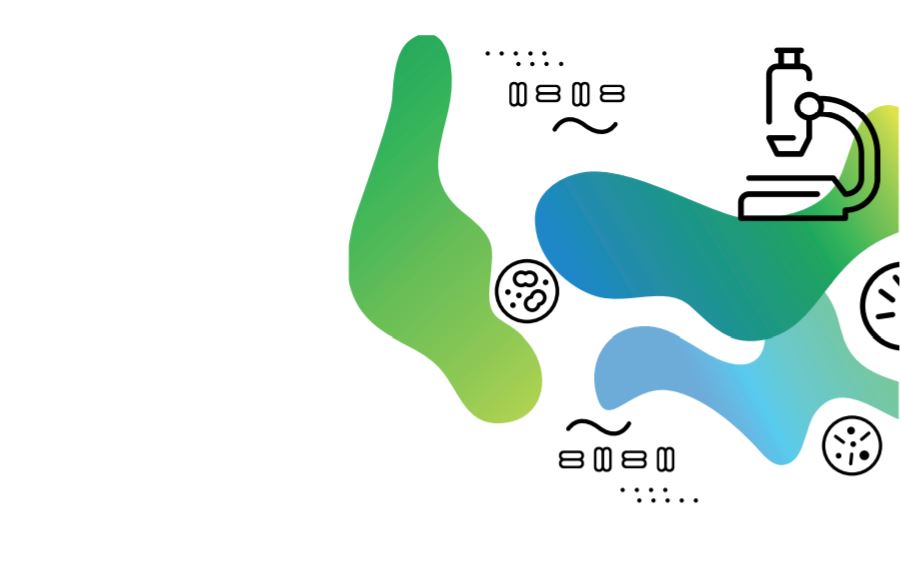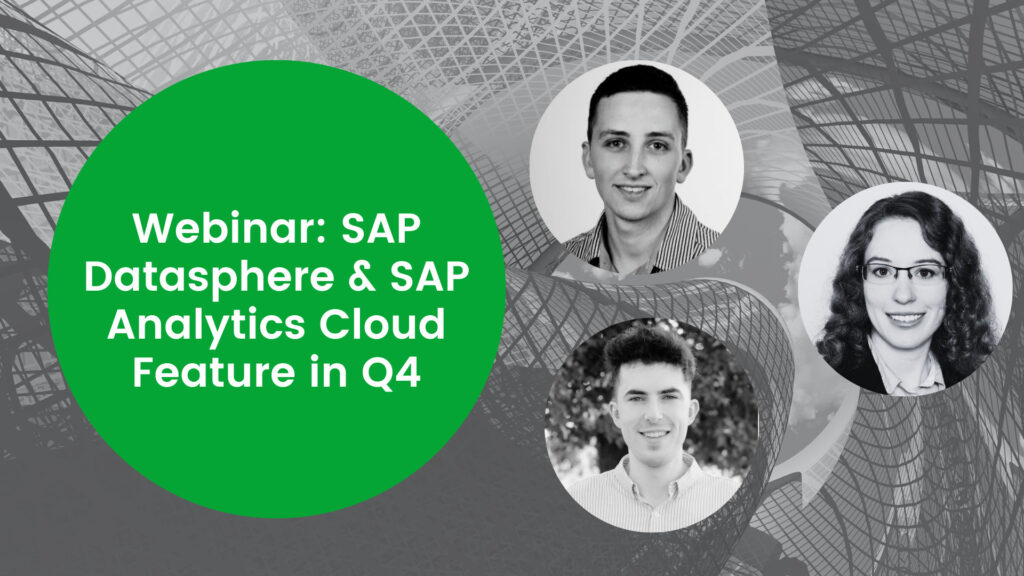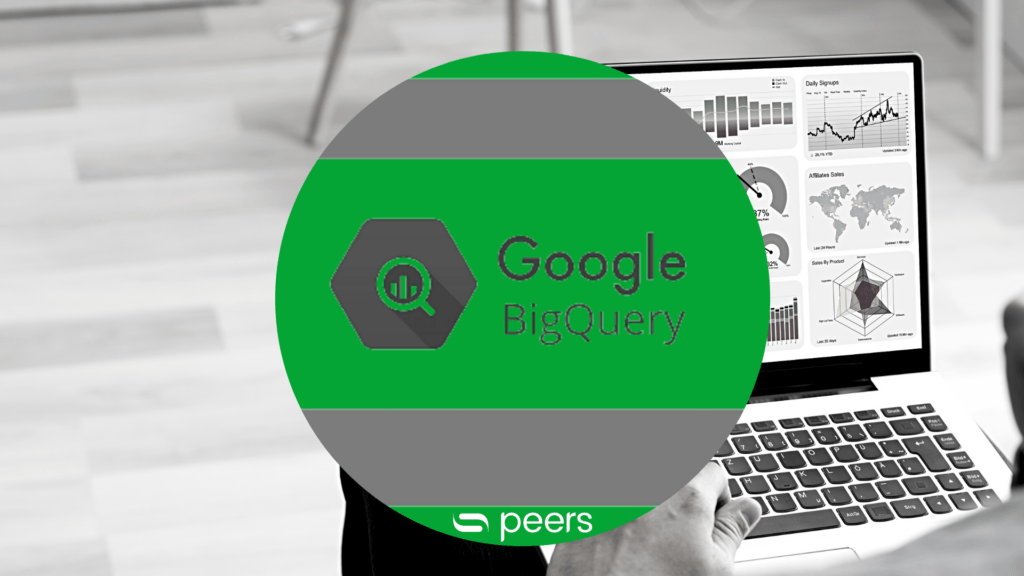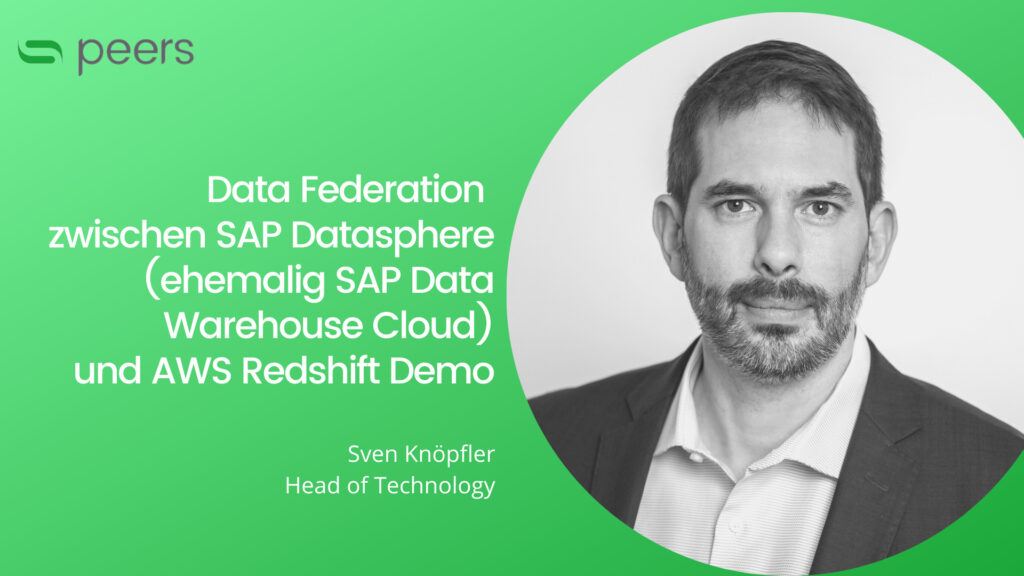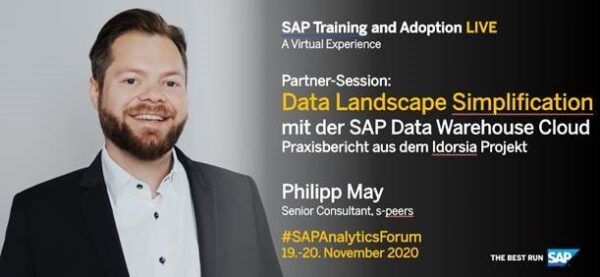SAP Datasphere - The future of data warehousing
SAP's innovative and cloud-based data ecosystem for business and IT users enables self-service data modeling and processing and avoids shadow IT solutions through a simplified data landscape with a coherent and uniform data infrastructure.
SAP Datasphere creates a comprehensive data ecosystem by the integration and reusability of data from different sources and from SAP & non-SAP systems is enabled. This creates an excellent basis for advanced analytics use cases as a data and AI platform and goes beyond a classic data warehouse.
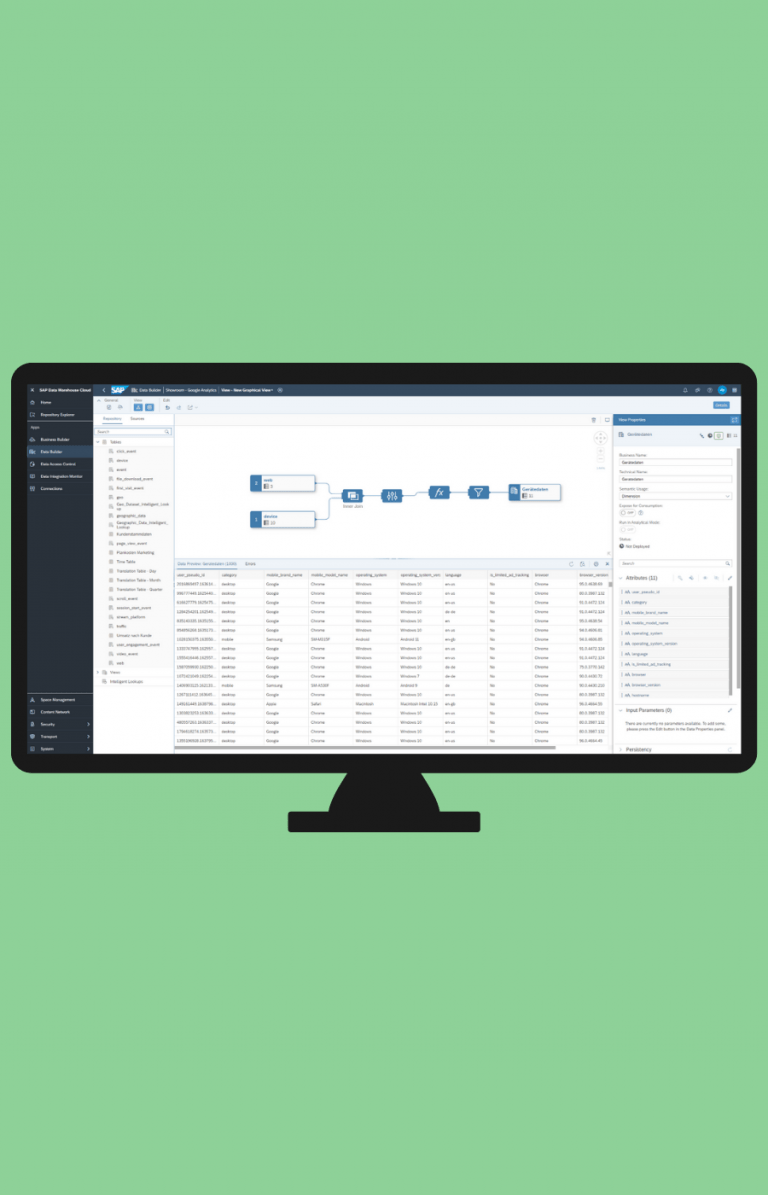
SAP Datasphere - The future of data warehousing
SAP's innovative cloud-based data warehousing solution for business and IT users enables self-service data modelling and avoids shadow IT solutions. Its reusability and ability to link central and individual data sources creates an excellent basis for storytelling and advanced analytics use cases.
All cool Data Warehouse (DWH) features will be released first in SAP Datasphere
SAP describes the SAP Datasphere as the "strategic product" of the data warehouse solution. This means that new features (such as the Data Marketplace) will only be released in the Datasphere in the future. Other data warehousing products (such as SAP BW on /4 HANA) will still be maintained, but not further developed.
Managed self-service
Departments are enabled to build their own data models or extend central ones.This accelerates the process and makesreports available more quickly.
Cloud-based
Ka Investment in on-premise hardware necessary and fast availability.
Connect to all
Integration with other (SAP) analytics tools:remote data access and clear presentation of all data, even with non-SAP products. BW4 and S/4 HANA integrations continue to be allowed.
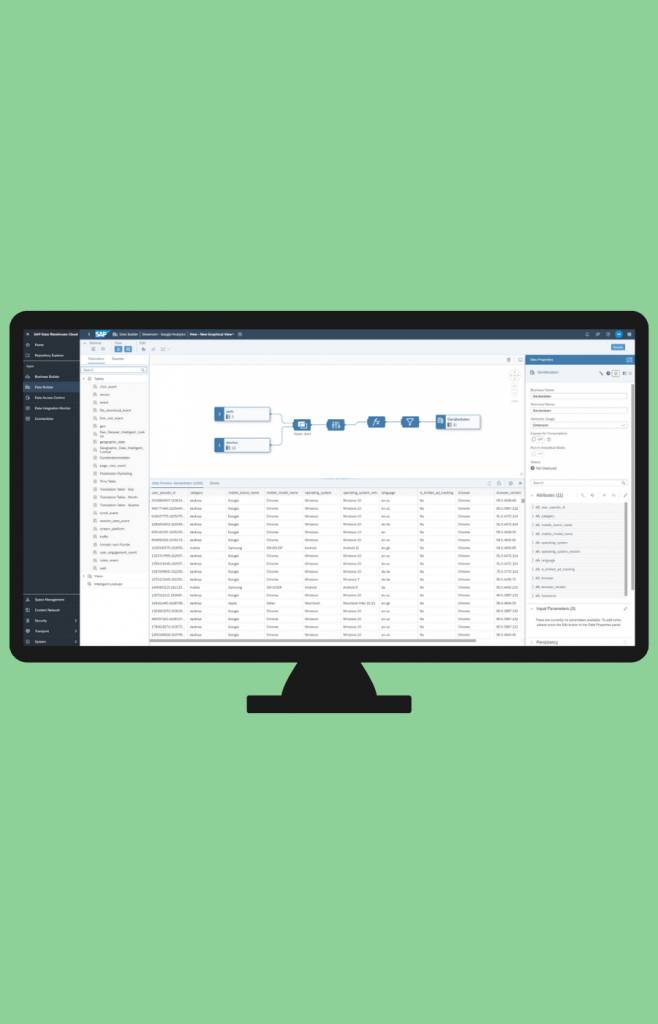
These are the advantages of SAP Datasphere
Harmonization of heterogeneous data through integration with SAP & non-SAP solutions in the cloud
A seamless and customized outof-the box integration with a variety of SAP & non-SAP data warehousing and data lake solutions will for the harmonization of heterogeneous data is made possible.Data can be accessed both replicating and purely virtually from different source systems. BW/4HANA and S/4HANA integrations are still possible.The installation of On-premise-hardware is no longer necessary.
Simplified and standardized data landscape with Business Data Fabric
The SAP Datasphere provides the basis for an innovative business data fabric with its open data ecosystem. A coherent and uniform data infrastructure makes it possible to integrate data and AI platforms in order to provide data from different systems and locations and to optimize the data landscape for comprehensive analysis. for comprehensive analysis simplify the data landscape. Dhe Datasphere provides the basis for data consumers with meaningful real-timedata with intact business context and -logic available in the cloud.
Innovative self-service platform through user-oriented data modeling
The Datasphere is suitable as a self-service platform thanks to its user-friendly data modeling and innovative functions that enable users to carry out data integration and data harmonization independently.
This enables the specialist departments to orchestrate data flows and expand data models independently. This includes not only structured but also unstructured data sources.

What is the SAP Datasphere (formerly DWC)?
- The Data Warehouse Cloud (DWC) was released by SAP in2019. There were two key milestones: (1) the release of the beta version in early 2019 and (2) general availability in November 2019.
- The first customer worldwide to implement DWC as a data warehouse was Swiss biotech company Idorsia. As an SAP partner, s-peers AG was heavily involved in the DWC implementation and as such can draw on many years of experience in DWC implementation.
- The DWC is a DWH Cloud solutionwhich enables user groups to create their own analytics applications in a quick and agile way. Together with the SAP Analytics Cloud (SAC), which has already been established on the market for some time, the SAP Data Warehouse Cloud (DWC) forms the core of the "SAP HANA Cloud Services" product range.
- The product in the SaaS (software as a service) model is a HANA-based end-to-end solution for data warehousing that combines data management processes with advanced analytics.
- 08.03.2023: Renaming DWC to SAP Datasphere and establishment as a cloud-based data ecosystem.
"Since2019, there has been the Data Warehouse Cloud (DWC), which has been further developed as SAP Datasphere since 2023. At s-peers, we have been allowed to implement SAP DWC for our customers since the beginning and this now also applies to SAP Datasphere. It is great to beallowed to further develop this innovative product with SAP ."
Paul Vatter, Head of Data Workshop

Webinar
SAP Datasphere & SAP Analytics Cloud feature update in Q2/24
Date: 28.05.2024
Time: 08.30 - 09.15 a.m.
Components and features in the SAP Datasphere
Data modellization and transformation from meaningfuln and linkedn data
Data Builder
In the data modeling process, the Data Builder offers various options for integrating, transforming (syntactically and semantically) and subsequently linking data. Data integration can be carried out via a CSV import, a graphical view or an SQL-based view.The latter two options provide convenient access to all tables that are either connected via a live connection (e.g. on-prem HANA database) or stored in the Datasphere.
For sophisticated data transformations or replication services, Data Flow offers graphical transformation tools as well as the option of using the Python programming language. It is also possible to define entityrelationship-models, which represent the semantic layer.ER models can help to visualize and better understand the relationships between different data sets.In addition, the DataBuilderactivates the "JoinRecommendation" function, which is used in a graphical view to recommend ajointo automatically set the relationships between the tables.
Business Builder and Story Builder
In the Business Builder, the business reference to the data can be established via business entities, such as articles or customers, as well as fact tables containing key figures. The resulting business layer is decoupled from the data layer so that a top-down modeling approach is possible, making the specialist area independent of changes in the data layer.
The Story Builder connects the Datasphere with the integrated SAC. This provides various functions for creating reports and visualizing key figures. If a dedicated SAC is available, this can be used.
Innovation through hybrid architectures integrating internal and external data sources
Connections
The Connections component offers the option of connecting the Datasphere to external data sources and checking these connections. It is possible to connect to a variety of SAP & non-SAP data warehousing and data lake tools. This allows operational applications to be supported with data and analyses across hybrid and multi-cloud environments.
Data Integration Monitor and Repository Explorer
The Data Integration Monitor provides all the information that is relevant for the integration of external data sources such as Microsoft Azure or Google BigQuery. This includes the monitoring and scheduling of data and replication flows or an overview of persisted tables.
The Repository Explorer offers a very intuitive and fast way to find existing models, such as dimension and fact models. The associated metadata (Changed On, Semantic Usage, Status, Type etc.) can be easily filtered and used for the search.
Centralized Governance and compliance for usersand Qsources with access to Spaces and Data Catalog
Spaces, data access control and security
Spaces are virtual and secure working environments that enable a specific user group to model data, integrate data and create story dashboards. Of interest here are the so-called Open SQL schemas, which provide an open interface for data storage in a Datasphere Space.
In the Security area, users can be managed, authorizations and roles assigned and activities tracked. In addition to the technical authorization and role concept, Data Access Control offers the option of defining functional data access for users at line level.
Data Catalog, Data Marketplace and Content Network
The Data Catalog is a feature of the rebranding to Datasphere. It enables users to search for and organize data products and makes it easier for companies to implement data quality and data governance standards. In addition, a data lineage of the respective data product is provided so that the user can understand where the data comes from and whether it is trustworthy.
The Data Marketplace is used for the efficient exchange of data products, both internally and with external data providers. Users can integrate the data products of other users into their models in real time. A connection to other source systems is not required, which reduces the barrier to successful data exchange and represents a collaboration mechanism. Examples of business scenarios for data modeling can be imported via the functions in the Content Network. You can also share your own scenarios with other systems.
Download the "SAP Data Warehouse Guideline" guide free of charge
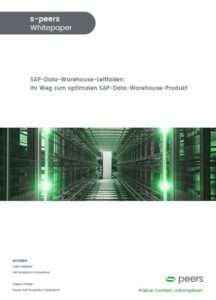
Positioning of SAP Datasphere in comparison to SAP BW/4HANA
SAP offers various solutions in the field of data warehousing. Until now, BW/4HANA has been the hobbyhorse in the field of data warehousing. Since 2019, SAP Datasphere has been an innovative addition to the SAP portfolio.
In recent years, SAP's strategic focus has shifted towards public cloud products with the Datasphere, among other things. SAP has positioned the Datasphere as a central component of SAP's data strategy, which aims to enable the seamless networking and integration of data across different sources, systems and cloud platforms.
How exactly SAP Datasphere is positioned in comparison to SAP BW/4HANA and how the respective application areas, target groups and main functions differ can be found in this further article.
Find out more about the positioning of SAP Datasphere compared to SAP BW/4HANA in the wiki:
We are happy to support you!"
How long does the implementation process take and what are the individual steps?
The implementation process depends on various factors and usually takes four-to-eight weeks. It consists of the following steps:
Objective
Requirements
Analysis of current situation
Design
Implementation
Coaching
SAP Datasphere: 5 tips for successful implementation
SAP Datasphere is THE warehousing product of the future from SAP. But what is the Datasphere and what do I have to consider for a successful implementation? Our video answers this and much more.
- What is the SAP Datasphere?
- What are the actual benefits for the customer?
- What makes it different from other SAP data warehousing solutions?
- How does the implementation process work?
- Success stories from businesses
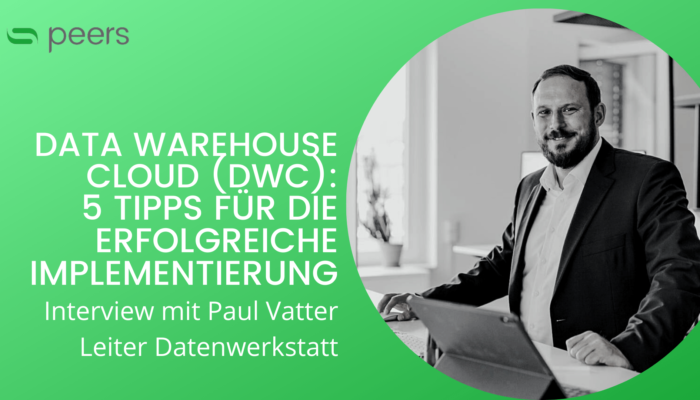
SAP Datasphere trainings
- We also offer regular training in small groups on the topic of SAP Datasphere.
- Duration of the introductory training: 1 day
- Duration of the advanced training: 1 day
- We are an SAP training partner - so you will also receive a globally recognised certificate.
- On site or online possible

KNOWLEDGE
Useful information
Get a comprehensive insight into the latest functional enhancements of SAP Datasphere (formerly DWC) and SAP Analytics Cloud (SAC) for the second quarter of 2024. On May 28, we invite you to...
Learn everything you need to know about the latest SAP DWC & SAC feature updates in Q4 2024. Our exclusive webinar will take place on November 28...
With solutions such as SAP BW/4HANA and SAP Datasphere, SAP offers different data warehousing options. While BW/4HANA specializes in structured enterprise data and analytics, Datasphere focuses on comprehensive data integration across platforms...
Learn everything you need to know about the latest feature updates to SAP DWC & SAC in Q4 2023. On October 13, our exclusive webinar will take place...
Success through data analysis: Meet our expert at the SAP Analytics Forum in Walldorf for an exciting discussion! The SAP Analytics Forum is an event organized by SAP...
Maximize your data usage! Latest feature updates for SAP Datasphere (formerly Data Warehouse Cloud) & SAP Analytics Cloud in July...
Long-term consistent data management is a complex challenge for organizations, as data is often stored in different systems and locations,...
SAP Datasphere (formerly DWC) & SAP Analytics Cloud in focus - Learn all about the latest features in the first...
With the third quarter update, SAP delivers numerous innovations and features for the cloud products SAP Data Warehouse Cloud...
The BW Bridge is presented by SAP as a way of transferring a system from a classic on-premise environment to the SAP Datasphere (formerly Data Warehouse Cloud). This interview was conducted by Daniel Moser (Senior Account Manager, s-peers AG) with Eugen Gering...
What is a data warehouse (chapter 1), how is it structured (chapter 2) and why do I need a data warehouse as an organization (chapter 3)? These questions are answered in the following knowledge article...
This article provides an overview of SAP Analysis for Office (AfO). It also answers the following questions: What is an SAP...
*Cancelled* To an Apéro on 12 May 2022 with... the Data Warehouse Cloud (DWC) SAP Data Warehouse Cloud (DWC) will...
In the webinar "DWC & SAC Feature Update" we inform about current trends and new features of the SAP Data Warehouse Cloud (DWC)...
What is the DWC Data Marketplace? What are the advantages of the DWC Data Marketplace? How does data import work using the DWC Data Marketplace? These and more...
You can expect an exciting webinar comparing the two data warehouse solutions SAP DWC and SAP BW/4HANA. Programme:...
When building complex data models in the data warehouse cloud, data is often drawn from disparate sources, such as the DWC Data Marketplace...
This article describes SAP BW Bridge, a new solution that connects enterprise information systems with SAP Datasphere (formerly Data...
Be part of the SAP Sapphire Zurich 2022! The Sapphire is making a local stop in Zurich this year!...
The SAP Analytics Forum is a training event organised by SAP for the SAP Analytics products. The s-peers AG is...
In the webinar "DWC & SAC Feature Update" we inform about current trends and new features of the SAP Data Warehouse Cloud (DWC)...
About Idorsia Pharmaceuticals Ltd Idorsia Pharmaceuticals Ltd was formed three years ago from Actelion Pharmaceuticals Ltd (a company active in the...
In the webinar "SAP Datasphere (formerly SAP Data Warehouse Cloud) & SAP Analytics Cloud Feature Update" we inform about the current trends...
Start the new year...with the Data Warehouse Cloud (DWC) The SAP Data Warehouse Cloud (DWC) is being developed by...
You use "SAP Analytics Cloud" as a reporting tool and want to connect your data lake without data replication...
Who is the demo interesting for? You use "SAP Analytics Cloud" as a reporting tool and would like to manage your data lake without...
Be there! From 13 to 15 April and from 20 to 22 April, thought leaders and experts will meet...
Be there virtually! The SAP Analytics Forum offers you the ideal platform to learn about innovations in the field of...
